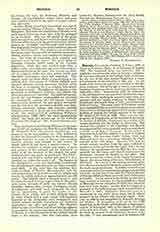

Massaia, GUGLIELMO, Cardinal, b. June 9, 1809, at Piova in Piedmont, Italy; d. at Cremona, August 6, 1889. His baptismal name was Lorenzo; that of Guglielmo was given him when he became a religious. He was first educated at the Collegio Reale at Asti under the care of his elder brother Guglielmo, a canon and precentor of the cathedral of that city. On the death of his brother he passed as a. student to the diocesan seminary; but at the age of sixteen entered the Capuchin Franciscan Order, receiving the habit on September 25, 1825. Immediately after his ordination to the priesthood, he was appointed lector of theology; but even whilst teaching he acquired some fame as a preacher and was chosen confessor to Prince Victor Emmanuel, afterwards King of Italy, and Ferdinand, Duke of Genoa. The royal family of Piedmont would have nominated him on several occasions to an episcopal see, but he strenuously Qpposed their project, being ‘desirous of joining the foreign missions of his order. He obtained his wish in 1846’. That year the Congregation of Propaganda, at the instance of the traveller Antoine d’Abbadie, determined to establish a Vicariate-Apostolic for the Gallas in Abyssinia. The mission was confided to the Capuchins, and Massaia was appointed first vicar-apostolic, and was consecrated in Rome on May 24 of that year. On his arrival in Abyssinia he found the country in a state of religious agitation. The heretical Coptic bishop, Cyril, was dead and there was a movement amongst the Copts towards union with Rome. Massaia, who had received plenary faculties from the pope, ordained a number of native priests for the Coptic Rite; he also obtained the appointment by the Holy See of a vicar-apostolic for the Copts, and himself consecrated the missionary Giustino de Jacobis to this office. But this act aroused the enmity of the Coptic Patriarch of Egypt, who sent a bishop of his own, Abba Salama, to Abyssinia. As a result of the ensuing political agitation, Massaia was banished from the country and had to flee under an assumed name. In 1850 he visited Europe to gain a fresh band of missionaries and means to develop his work: he had interviews with the French Minister of Foreign Affairs in Paris, and with Lord Palmerston in London. On his return to the Gallas he founded a large number of missions; he also established a school at Marseilles for the education of Galla boys whom he had freed from slavery; besides this he composed a grammar of the Galla language which was published at Marseilles in 1867. During his thirty-five years as a missionary he was exiled seven times, but he always returned to his labors with renewed vigour. However, in 1880 he was compelled by ill-health to resign his mission. In recognition of his merit, Leo XIII raised him to the titular Archbishopric of Stauropolis, and on November 10, 1884, to the dignity of cardinal of the title of S. Vitalis. At the command of the pope he wrote an account of his missionary labors, under the title, “I miei trentacinque anni di missione nell’ alta Etiopia”, the first volume of which was published simultaneously at Rome and Milan in 1883, and the last in 1895. In this work he deals not only with the progress of the mission, but with the political and economic conditions of Abyssinia as he knew them.
FATHER CUTHBERT

